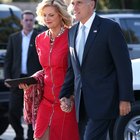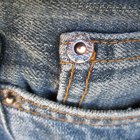
While gymnastics competitions typically have stringent dress codes, most gyms have much looser standards for practice clothing. Relaxed clothing could lead to several potential issues, however, so use caution when selecting your child's outfits. One of the paramount issues is regarding safety, particularly as loose clothing or accessories could get wrapped up in the equipment. In addition, gymnasts must achieve specific body positions, so it is important for coaches to be able to see the gymnast’s form. Many gyms may also tighten the practice attire requirements as gymnasts move up in levels and precise positioning becomes more important. Check with your gym for specific policies that apply to your child.
Small Children
Although leotards are always recommended for girls, most gyms allow preschoolers and very young children to wear a t-shirt and shorts rather than a leotard. Choose fitted items without frills that could get in the way as the child moves. Tightly tuck in t-shirts and make sure that shorts will not fall down when your child runs or tumbles. Footless tights are acceptable in most gyms, but tights with feet are a safety hazard.
Female Attire
Girls and women are required to compete in leotards, so most gyms expect female gymnasts to wear leotards during practice. Gymnastics leotards are tight and stretchy, allowing the gymnast to move freely. Competition leotards are long-sleeved, but most gyms allow gymnasts to practice in short-sleeved or sleeveless leotards. Bike shorts or other tight-fitting shorts are also generally allowed during practice. Some gyms allow girls to wear a tightly fitted t-shirt or tank top over the leotard, while others do not.
Male Attire
In competition, male gymnasts wear a sleeveless leotard known as a singlet, paired with either shorts or long pants, depending on the event. For practice, boys generally wear shorts and a tight t-shirt or tank top. Shorts should be above the knee and fit well. Buttons, zippers and other ornamentation are dangerous and should not be worn during practice.
Accessories
If your gymnast has long hair, it must be tied back for class. Most gyms allow both boys and girls to wear a simple ponytail, bun, braid or any other style that keeps the hair out of the face. For competitions, some gyms require all females to wear the same hairstyle. Optional accessories include beam shoes, which help maintain traction on the balance beam, and grips, which assist the gymnast in holding onto the rings or bars. Talk to your child’s coach before purchasing these accessories to ensure that you get the proper style and fit.
Related Articles

Types of Sleeves for Prosthetic Legs

Can You Bind the Tummy to Tighten Loose ...

Rash Guard for Swimming

How to Dress for a Cotillion

Professional Dress for Plus-Size Women

How to Put on Padded Bike Shorts

What Is a Thermal Shirt?

How an Executive Woman Should Dress

Different Kinds of Blouses

Shawl Collar Vs. Lapel Tuxedo

Speedo Etiquette

The Advantages of Swim Caps

What Is the Proper Clothing for Mormon ...

Children's Clothes in 1910

How to Dress for an Elementary School ...

How to Dress a Kid for a Hoedown Dance

How to Make a Girl's Shoulders Look ...

Tops That Go With Black Pinstripe ...

The Difference Between Loose & Relaxed ...

List of Things You Wear on Your Head
References
Writer Bio
Lisa Fritscher is a freelance writer specializing in disabled adventure travel. She spent 15 years working for Central Florida theme parks and frequently travels with her disabled father. Fritscher's work can be found in both print and online mediums, including VisualTravelTours.com. She holds a Bachelor of Arts in psychology from the University of South Florida.
Photo Credits
Photodisc/Photodisc/Getty Images